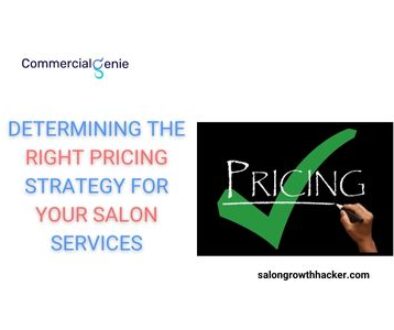How Salon Owners Can Increase Salon Efficiency: A Complete Guide
Introduction:
How to make a salon successful? When you operate a salon, it requires a combination of passion, skill, and effective management. Salon owners must provide excellent services and increase efficiency to maximise profitability and stay competitive. This comprehensive guide will delve into various strategies and best practices salon owners can implement to enhance efficiency and build a thriving salon business. From optimising operations to effective management techniques, this guide will provide valuable insights to help salon owners succeed in a challenging and rewarding industry.
Section 1: Understanding the Salon Industry
Assessing Profitability: Before diving into the salon business, it is important to understand its profitability potential. Research and analyse the local market to determine the demand for salon services, assess the competition, and evaluate the average pricing in the area. Understanding the financial aspect of owning a salon will help you set realistic expectations and make informed decisions.
Building a Strong Foundation: Proper planning and preparation are crucial when starting a salon business. Develop a solid business plan that outlines your target market, services offered, pricing strategy, marketing plan, and financial projections. A well-thought-out plan will serve as a roadmap and guide your salon’s growth.
For a better understanding of the salon industry, you can read the blog.
Section 2: Effective Salon Management
Staffing and Training: Hiring skilled and passionate stylists and beauty professionals is essential to providing top-notch services. Invest in training programs to enhance the skills of your staff and keep them updated on the latest trends and techniques. Foster a positive work culture that encourages teamwork and provides ongoing support and motivation.
Efficient Appointment Scheduling: Implement a robust scheduling system to optimise time management and minimise gaps in the appointment book. Utilise salon management software or online booking platforms to streamline the booking process, avoid overbooking, and reduce client waiting times.
Inventory Management: Maintaining an organised inventory system is crucial for efficient salon operations. Keep track of your product inventory, reorder items in a timely manner, and eliminate excess stock. By managing inventory effectively, you can reduce waste, control costs, and ensure you always have the necessary supplies.
Salon Layout and Design: Create a salon layout that maximises space utilisation and creates a pleasant environment for clients and staff. Consider factors such as the flow of workstations, waiting areas, retail displays, and accessibility. A well-designed salon improves efficiency and enhances the overall customer experience.
Section 3: Attracting and Retaining Clients
Strategic Marketing: Develop a comprehensive marketing strategy to attract new clients and retain existing ones. Utilise online and offline marketing channels such as social media, search engine optimisation (SEO), email marketing, local advertising, and community partnerships. Tailor your marketing efforts to target your ideal clientele and effectively communicate your salon’s unique selling propositions.
Exceptional Customer Service: Excellent customer service is key to building a loyal client base. Train your staff to be friendly, attentive, and knowledgeable, and encourage them to go the extra mile to exceed client expectations. Implement personalised consultations, follow-up communication, and loyalty programs to enhance the customer experience and foster long-term relationships.
Online Presence and Reputation Management: Establish a strong online presence by creating a professional website and actively managing social media profiles. Share engaging content, showcase your work, and encourage satisfied clients to leave positive reviews. Monitor and respond to online reviews promptly, as they significantly shape your salon’s reputation.
Section 4: Financial Management and Growth Strategies
Pricing Strategies: Set competitive and profitable prices for your salon services. Consider overhead costs, staff salaries, product expenses, and desired profit margins when determining your pricing structure. Regularly review and adjust your prices to stay competitive and ensure profitability.
Cost Control and Profit Analysis: Implement cost-saving measures to optimise your salon’s financial performance. Monitor expenses closely, negotiate favourable terms with suppliers, and seek opportunities to reduce overhead costs without compromising the quality of your services. Conduct regular profit analysis to identify areas where you can improve profitability and make informed business decisions.
Diversify Revenue Streams: Explore additional revenue streams to complement your salon services. Consider offering retail products, selling professional tools or beauty accessories, or providing value-added services such as bridal makeup packages or spa treatments. Diversifying your revenue streams can increase your salon’s profitability and create opportunities for upselling.
Collaborations and Partnerships: Build strategic partnerships with local businesses, influencers, or complementary service providers to expand your reach and attract new clients. Cross-promotions, joint events, or referral programs can help you tap into new markets and generate additional business.
Section 5: Continuous Learning and Professional Development
Stay Updated with Industry Trends: Keep yourself and your team up to date with the latest trends, techniques, and advancements in the salon industry. Attend industry conferences, trade shows, and workshops to enhance your skills, discover new product lines, and stay ahead of the competition. Embrace innovation and adapt to evolving customer preferences.
Invest in Education and Training: Encourage ongoing education and skill development for yourself and your staff. Offer opportunities for advanced training, certifications, and specialised workshops. This investment in professional development will enhance the quality of your services and attract discerning clients.
Seek Customer Feedback: Actively seek feedback from your clients to better understand their needs and preferences. Conduct surveys, implement suggestion boxes, or engage in one-on-one conversations to gather valuable insights. Use this feedback to make necessary improvements and continually refine your salon’s offerings.
Conclusion:
Efficiency is the key to success in the salon industry. You can create a thriving and successful business by implementing effective management strategies, providing exceptional customer service, and continuously improving your salon’s operations. Remember to stay focused on your goals, monitor your financial performance, and adapt to the changing dynamics of the industry. Invest in your staff, build strong client relationships, and leverage marketing opportunities to attract and retain new clients. With dedication, passion, and a commitment to excellence, you can make your salon successful and create a lasting impact in the beauty industry. Use the strategies outlined in this guide as a foundation, customise them to suit your unique salon environment, and watch your salon flourish.





